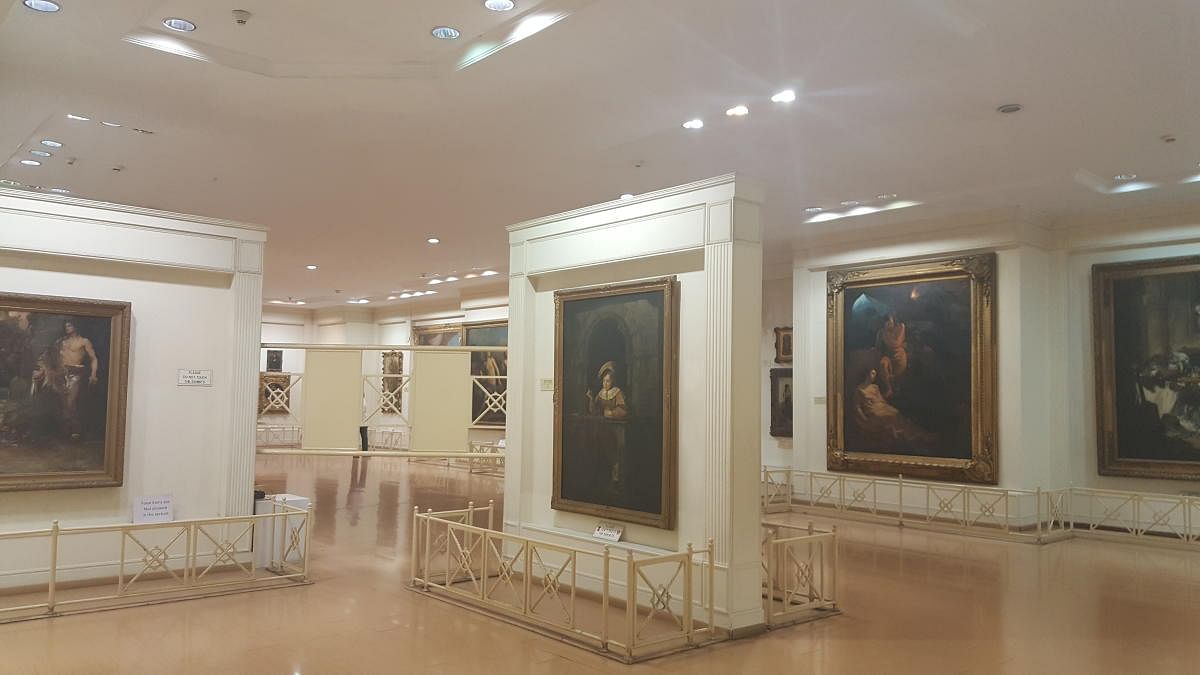
I hold a schoolgirl-like enthusiasm for museums, and they bring out the adventurous spirit in me. I love to amble around the galleries, unearthing one treasure at a time.
The Salar Jung Museum in Hyderabad — one among the national museums in India — is one such treasure trove, with an extensive collection of more than a million artefacts, reflecting the passion of an art aficionado.
I am at the gates early; my excitement palpable, as I enter the sprawling, majestic white building located on the southern bank of the rivulet Musi — just a stone’s throw away from the famous Charminar.
The connoisseur
Nawab Mir Yousuf Ali Khan Bahadur Salar Jung III, after whom the museum gets its name, was the third prime minister of the erstwhile Nizams of the Hyderabad Province. A man of exquisite taste, Salar Jung continued the family tradition of collecting artefacts and soon converted it into a full-time passion. Giving up his position at the Nizam’s court, he devoted the rest of his life to collecting rare objects and housing them at his palace. The collection, spanning 40 years, boasts of family heirlooms, gifts of friendships and travel curios which were curated at the present building in 1951.
Magnificent collection
The tour begins with the Founder’s gallery, where the members of the prestigious family come alive in huge portraits, painted skillfully with a touch of gold on their finery.
Soon I am exploring the 39 galleries spread across three wings on two floors. Scanning the informative placards placed around the objets d’art enclosed in glass cases, I am taken back in time, visualising the lifestyle of the bygone era.
Collections of intricate carvings on animal bones, horns and ivory give a glimpse into the prime sport and favourite pastime of the royals — hunting.
Then come the array of walking sticks which did well to support a sturdy gait and doubled up as an umbrella or a blade for combat (a small concealed lever would release the unbrella).
The stick-heads carved out of jade or ivory reflected the pomp of the user.
Not to be missed are the terrific collection of swords, daggers and knives used by prominent emperors. The modern weapon gallery displayed guns, rifles and artillery.
Pots, pans, cutlery, toiletries, jewels, archer’s rings, and armours in stone, jade and metal were not far behind in proclaiming their importance.
A well-read man
Salar Jung’s penchant for reading comes across in his vast collection of books and rare manuscripts: an Arabic translation of the Mahabharata and Bhagwad Gita, the holy Quran in gold-embossed letters, and even a few achkan (robes) woven in silk and inscribed with verses on them.
The museum’s vast library is a research scholar’s paradise with rare documents and manuscripts.
As time goes by
Popular with the visitors is the clocks gallery: grandfather clocks, table clocks, clock faces in jade, ivory and porcelain from across the globe, depict the collector’s fascination for timepieces.
The quadrangle houses a musical clock made of 350 parts that chimes hourly, with miniature figurines sounding the gong.
A thing of beauty…
Salar Jung’s collectables, like statues in wood and marble, ceramic miniatures, and paintings of masterpieces easily steal an art-lover’s heart. A dual statue in wood of Mephistopheles and his lady love, Margaretta, is carved from a single block; they are seen standing back-to-back when viewed through a mirror!
Another work of artistic magic is the veiled Rebecca — the marble statue captures the texture and folds of the sheer fabric of her veil so realistically that one is left wondering at the marvel of the hands who, without the aid of any modern tool or technology, produced such a masterpiece.
Other assortments from around the world such as chandeliers, carpets and furniture, vie for our attention.
I step in to join the excitement in the newly-acquired children’s wing where a huge model of the railways brings out the wide-eyed child in everybody.
In another corner, toy soldiers from different countries, arms and armaments are all positioned in readiness for a battle.
Articles in the Indo-Chinese and Japanese wing are of intricate craftwork, engraved on porcelain: dolls, tea sets, wine cups and flutes, jewellery, and even furniture.
Oblivious to time, I meander through the halls, revisiting some to savour the grandeur all over again.
The trip rekindled my awe for the Nawab’s one-of-a-kind collection which gives a peek into the rich culture that India boasts of.